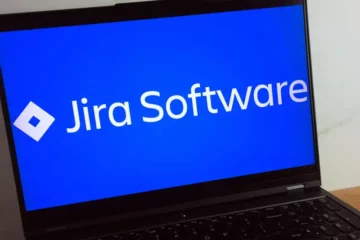50 Interview Questions About High Quality Assurance With Answers
April 22, 2025Каким образом работа интернет-казино с бонусами сказывается на мировую экономику
April 22, 2025An Introduction To Docker And Containers For Newbies
It supplies the instruments and services necessary for building, working, and deploying containerised functions. Virtualisation is like having a magician’s hat that may conjure up a quantity of hats inside it. A Docker container contains an utility that is isolated from the outside world. For this to be useful, it have to be potential to work together with the environment. Subsequently, there are ways to exchange data between host and container, in addition to between a number of containers. Standardised interfaces enable containers for use in numerous environments.

00,000 Learners Love Us! Get Personalised Resources In Your Inbox
As A Result Of of those above, working a number of container instances from a single base picture offers enhanced general effectivity. The working instances of a Docker container image is a Docker container. In Distinction To the container pictures, Docker containers are transient, stay, and options executable content. The containerization device features straightforward commands and effort-reducing automation that saves a substantial quantity of why do we need docker both effort and time while working with containers. Although Docker is free-to-use, open-source, it additionally has a commercial offering. Your utility can now connect to MySQL at localhost port 3306 as if it was operating natively.
View Your Running Containers
Docker containers encapsulate all dependencies, making certain that applications run persistently throughout different environments—from a developer’s laptop computer to manufacturing servers. This reduces the “it actually works on my machine” drawback considerably. In real-world functions, Docker and Kubernetes typically work together. Builders use Docker to create and bundle containers, whereas Kubernetes orchestrates and manages them in production. This mixture enables businesses to build scalable, resilient, and cloud-native functions with ease. Imagine you have a web utility with a frontend, backend, and database.
Benefits Of Operating Docker Containers
Suppose of this as the giant, organized on-line freezer full of completely labeled meal packing containers (Images). You can push your custom-made image there to share it, or pull pictures made by others. It Is like crafting a connoisseur meal in your pristine kitchen, using your perfectly calibrated oven and your favorite artisanal sea salt. Then, you try to recreate it at a good friend’s place utilizing their questionable microwave, a single blunt knife, and spices of unknown origin and vintage. This single template can be used to build one or many bodily containers which can all be identical and match the specifications in the container template.
Docker and Kubernetes are both important instruments in trendy containerized environments, but they serve distinct functions. While container isolation limits access between functions, containers share the host kernel, creating completely different safety boundaries than digital machines. Containers are an abstraction at the app layer that packages code and dependencies together. A Number Of containers can run on the identical machine and share the OS kernel with other containers, each operating as isolated processes in consumer area.
Think of this as creating configuration to allow you to to attach through the isolated environment of the container. Following this evolution, Docker continues to provide again with the containerd project, which Docker donated to the Cloud Native Computing Foundation (CNCF) in 2017. Containerd is an industry-standard container runtime that leverages runc and was created with an emphasis on simplicity, robustness and portability. When you execute processes in your Docker containers, you could have seen an exit code zero, which suggests your process was successful. In other instances where your container terminates, you’ll get an exit code 1.
Docker safety features like read-only volumes, privilege dropping, and consumer namespaces additional improve https://deveducation.com/ safety. Docker‘s programmatic management APIs combined with underlying OS-level virtualization make it easy to automate container lifecycles. Builders can rapidly move between coding, testing, and shipping new incremental updates. Your software springs to life, snug and isolated in its field, running exactly as meant thanks to the meticulous packing job. Docker lets you store these Pictures in Registries (like Docker Hub).
- The managed service takes care of scheduling and running your Docker containers, as well as scaling them to meet the demand.
- These concepts are the next layer to mastering the containerized world.
- Moveable applications often use volumes to take care of state between container rebuilds.
- Managed container companies additionally present limited flexibility and management over the underlying infrastructure—for example, you might not be succesful of access the server running your containers.
- Moreover, beginning up a container will take seconds or much less, in comparability with minutes for a lot of VMs.
- Since containers are so light-weight, it’s common apply to run all features of an software in several containers, for overwhelming maintainability and modularity.
Between selecting the correct mannequin, navigating hardware quirks, and optimizing for performance, it’s easy to get caught earlier than you even begin constructing. At the same time, more and more developers want the flexibility to run LLMs locally for improvement, testing, or even offline use instances. That all sounds very thrilling, but what even is a Docker container? A Docker container is a software program unit that packages together with the source code of an software along with its runtime setting. This might embrace frameworks, libraries, configuration settings, and different specs. The first time you see this process, it might sound a bit long winded.

Docker containers present a consistent setting for development, testing, and deployment, accelerating the software program improvement life cycle. This is why they have turn into a vital part of the DevOps toolchain. Each container runs in its personal namespace, making certain that applications do not intrude with each other.
Docker Containers Are All Over The Place: Linux, Windows, Knowledge Center, Cloud, Serverless, And So Forth
For instance, a different container for the frontend, backend, and database. For example, you may run a different container for the frontend, backend, and database. With Out getting too deep, a VM is a complete operating system with its personal kernel, hardware drivers, packages, and functions. Spinning up a VM solely to isolate a single application is a lot of overhead.

As Quickly As created, Docker images are immutable, that means they cannot be modified. If you need to make modifications to an software, you need to modify the Dockerfile and create a new picture. This immutability ensures consistency and reproducibility in utility deployment. Think About you want to construct multiple shipping containers to move objects all round the world.
By the tip, you’ll perceive how to leverage Docker‘s portable setting on your improvement workflows and manufacturing deployments. Machine virtualization allows several VMs to share the assets of 1 hardware server. Equally, several software parts share the resources of one OS kernel occasion using a course of referred to as virtualization. The Docker daemon runs on Linux machines and handles container operations – distribute pictures, run containers, manage volumes & networks and so on.

